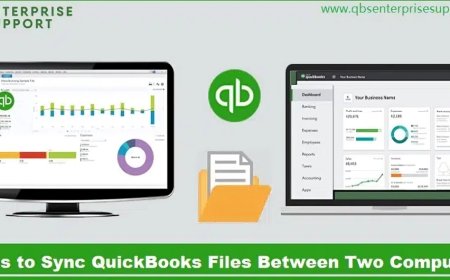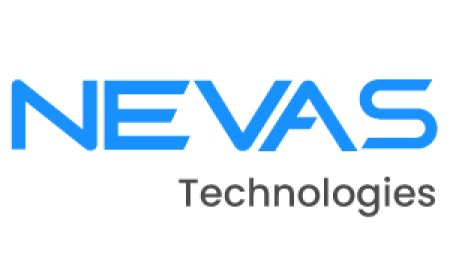Choosing the Right IT Model: Staff Aug vs Managed Services
Compare Staff Augmentation vs Managed Services to find the right IT model for your business. Learn how each approach impacts control, cost, scalability, and project success.

In today's fast-paced digital landscape, businesses are constantly looking for efficient ways to scale their IT capabilities. Whether youre a startup trying to build your tech team or a large enterprise planning to expand, choosing the right model to meet your IT needs is crucial. Two popular approachesstaff augmentation and managed servicesoften lead the conversation. But how do you know which one is right for your business?
In this blog, well break down the Staff Augmentation vs Managed Services model, highlighting their pros, cons, and ideal use cases. By the end, youll have a clear understanding of which option fits your goals, budget, and technical requirements.
Understanding Staff Augmentation
Staff augmentation is a flexible outsourcing strategy where businesses hire external IT professionals to supplement their in-house team temporarily. Instead of going through a lengthy hiring process, companies can quickly scale their workforce with skilled talent on demand.
You still manage the projects, workflows, and productivitywhat changes is the ease and speed with which you bring in new expertise.
Pros of Staff Augmentation
-
Cost-effective scaling: You only pay for the talent when you need itideal for short-term projects or to fill sudden skill gaps.
-
Direct control: You manage the staff like your own employees, ensuring alignment with your processes.
-
Quick onboarding: Compared to traditional hiring, onboarding augmented staff is significantly faster.
Cons of Staff Augmentation
-
Management responsibility: Your internal team still has to handle project planning, quality control, and oversight.
-
Short-term focus: It works best for temporary needs rather than long-term strategy.
This model is perfect when your project requires niche skills or sudden workforce expansion, but you want to retain full control over operations.
What Are Managed Services?
Managed services involve outsourcing the entire IT function or a particular segment (like cybersecurity, cloud management, or network monitoring) to a third-party provider. These providers proactively manage your systems, fix issues, and ensure everything runs smoothlywithout your team needing to be hands-on.
An IT Outsourcing Company offering managed services usually brings its own processes, tools, and SLAs (service level agreements), ensuring consistent results.
Pros of Managed Services
-
Focus on core business: You can offload IT tasks and focus on what matters mostrunning your company.
-
Predictable costs: With a fixed monthly fee, budget planning becomes simpler.
-
24/7 monitoring and support: Managed service providers offer around-the-clock support to prevent downtime.
Cons of Managed Services
-
Less internal control: Since the provider handles the operation, you might have less influence over day-to-day decisions.
-
Dependence on the provider: The quality of your IT infrastructure heavily relies on your providers performance.
This model is ideal for companies seeking stability, long-term planning, and a hands-off approach to IT management.
When to Choose Staff Augmentation
Sometimes, you just need a few extra hands on deckwithout committing to full-time hires. Staff augmentation shines in these situations:
-
Youre running a fast-paced project with tight deadlines.
-
You need specialized skills temporarily.
-
Your internal team is overloaded and needs support.
Lets say your development team is solid but needs a machine learning expert for just 3 months. Hiring one full-time makes little sense. But with staff augmentation, you can plug that gap quickly and cost-effectively.
Plus, it keeps you agile. You dont get bogged down by long-term HR commitments or infrastructure setups. Its all about speed and precision.
When to Choose Managed Services
On the flip side, managed services work best when youre thinking long-term. Maybe your team is small and cant handle system monitoring or cybersecurity in-house. Or perhaps you're scaling fast and need predictable IT support without micromanagement.
An IT Outsourcing Company offering managed services can handle your entire infrastructurekeeping everything secure, compliant, and efficient while you focus on your business goals.
Managed services are also great for:
-
24/7 system monitoring and support.
-
Ensuring IT compliance and security protocols.
-
Reducing operational risks by offloading IT management.
If youre building for the future and want peace of mind, this model has your back.
Staffing Model Comparison in IT Services: What to Consider
When making a decision, dont just compare the models in a vacuum. Consider the bigger picture. Here's what you should evaluate in your staffing model comparison in IT services:
-
Project Duration: Short-term favors augmentation, long-term favors managed services.
-
Skill Specialization: Niche skills needed quickly? Go for augmentation.
-
Budget Predictability: Managed services offer more consistent budgeting.
-
Control and Responsibility: Want full control? Augment. Want less hassle? Manage.
-
In-House Team Bandwidth: If your teams stretched thin, managed services may be your savior.
Understanding these dimensions helps you avoid mismatched strategies and optimize your outcomes.
Making the Final Call
So, whats the verdict in the Staff augmentation model vs managed services model discussion?
The truth isit depends. Both models have their strengths and ideal use cases. Augmentation offers agility and skill access, while managed services deliver stability and strategic oversight. It's not uncommon for companies to blend both, using staff augmentation for rapid project needs and managed services for overarching IT operations.
Whatever path you choose, align it with your business goals, resource availability, and growth strategy.
Conclusion
Navigating your IT staffing strategy doesnt have to be complicated. Whether youre leaning toward agile expansion with staff augmentation or comprehensive support with managed services, the right model will empower your business to thrive in todays tech-driven world.
By carefully comparing the Staff augmentation model vs managed services model, and understanding your specific needs, youll set the stage for greater efficiency, innovation, and growth.
FAQs
1. Can I use both staff augmentation and managed services together?
Yes! Many companies use a hybrid approach to balance control with long-term efficiency. Staff augmentation can handle short-term needs while managed services provide continuous support.
2. Is staff augmentation more expensive than managed services?
Not necessarily. Staff augmentation offers flexibility and can be cost-effective for short-term needs, whereas managed services are better for long-term budgeting and support.
3. What types of projects are best suited for managed services?
Ongoing tasks like network monitoring, data backup, cybersecurity, and infrastructure management are ideal for managed services.
4. How fast can I get started with staff augmentation?
Very quickly, some providers can deploy skilled talent within days, depending on your requirements.
5. What should I look for in an IT outsourcing company?
Look for industry experience, a strong track record, clear SLAs, responsive support, and transparent pricing models.




































